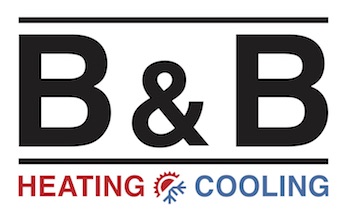
You shouldn’t have to sacrifice comfort or drain your wallet to keep your home at the right temp during summer weather.
But what is the best temp, exactly? We review advice from energy experts so you can choose the best temperature for your home.
Here’s what we advise for the most energy-efficient setting for air conditioning in Florissant and St. Charles.
Recommended Thermostat Settings for Summer
Most people find setting the thermostat at 72-73 degrees is ideal. However, if there’s a sizeable difference between your interior and exterior temps, your electrical bills will be bigger.
These are our recommendations based on the U.S. Department of Energy (DOE) and ENERGY STAR®.
While at home: 78 degrees. While that sounds warm, there are ways you can keep your house cool without having the air conditioning going constantly.
Keeping windows and window treatments closed during the day keeps cool air where it should be—indoors. Some window solutions, like honeycomb shades or plantation shutters, are created to offer added insulation and better energy efficiency.
If you have ceiling fans in your residence, the DOE says you can move thermostat temps about 4 degrees warmer without giving up comfort. That’s due to the fact they refresh through a windchill effect. Since they cool people, not areas, switch them off when you leave a room.
If 78 degrees still appears too warm initially, try running a test for about a week. Start by increasing your setting to 78 degrees while you’re at your house. Then, gradually lower it while using the suggestions above. You might be astonished at how comfortable you feel at a warmer temperature setting.
While away: 88 degrees. There’s no need to keep the air conditioning on all day while your residence is empty. Switching the temp 7–10 degrees warmer can save you an estimated 5–15% on your electricity bills, according to the DOE.
When you get home, don’t be tempted to put your thermostat colder than 78 to cool your house more quickly. This isn’t effective and typically produces a higher electricity expense.
A programmable thermostat is a good way to keep your temperature under control, but you need to set programs. If you don’t use programs, you might forget to raise the set temperature when you leave.
If you want a convenient solution, think over getting a smart thermostat. This thermostat links with your phone, so it realizes when you’re at home and when you’re out. Then it intuitively changes temperature settings for the best savings. How much exactly? About $180 each year on heating and cooling, according to ENERGY STAR.
Another advantage of using a smart thermostat? You can use your phone to watch and regulate temperature settings from almost anywhere.
While sleeping: Around 70 degrees. While ENERGY STAR advises 82 degrees, that may be unbearable for the majority of families. The majority of people sleep better when their sleeping space is chilled, so that’s why the National Sleep Foundation recommends 60–67 degrees. But that might be too chilly, due to your clothing and blanket preference.
We suggest using a similar test over a week, putting your thermostat higher and steadily turning it down to determine the best setting for your residence. On mild nights, you may find keeping windows open at night and relying on a ceiling fan is a better solution than running the air conditioning.
More Ways to Conserve Energy During Hot Weather
There are added methods you can spend less money on cooling bills throughout warm weather.
- Buy an energy-efficient cooling system. Central air conditioners only last about 12–15 years and lose efficiency as they become older. An upgraded air conditioner can keep your home comfier while keeping AC expenses small.
- Schedule yearly air conditioner service. Annual air conditioner maintenance keeps your unit running smoothly and might help it run at better efficiency. It can also help extend its life expectancy, since it helps technicians to discover seemingly insignificant problems before they cause a major meltdown.
- Put in new air filters frequently. Read manufacturer instructions for replacing your air filter. A dirty filter can lead to your system short cycling, or switch on and off too often, and raise your cooling.
- Inspect attic insulation levels. Nearly 90% of homes in the United States don’t have enough insulation, according to the Insulation Institute. The majority of southern climates should have 13–14” of attic insulation, while northern climates should have 16–18”.
- Have your ductwork inspected. Ductwork that has separated over time can leak cold air into your attic, walls or crawl space. This can create major comfort troubles in your residence, such as hot and cold spots.
- Seal cracks, doors and windows. Keep muggy air in its place by plugging holes. You can also caulk or weather strip doors to seal more conditioned air within your home.
Save More Energy During Hot Weather with B & B Heating & Cooling
If you are looking to conserve more energy this summer, our B & B Heating & Cooling experts can help. Give us a call at 314-325-7552 or contact us online for more details about our energy-saving cooling products.
